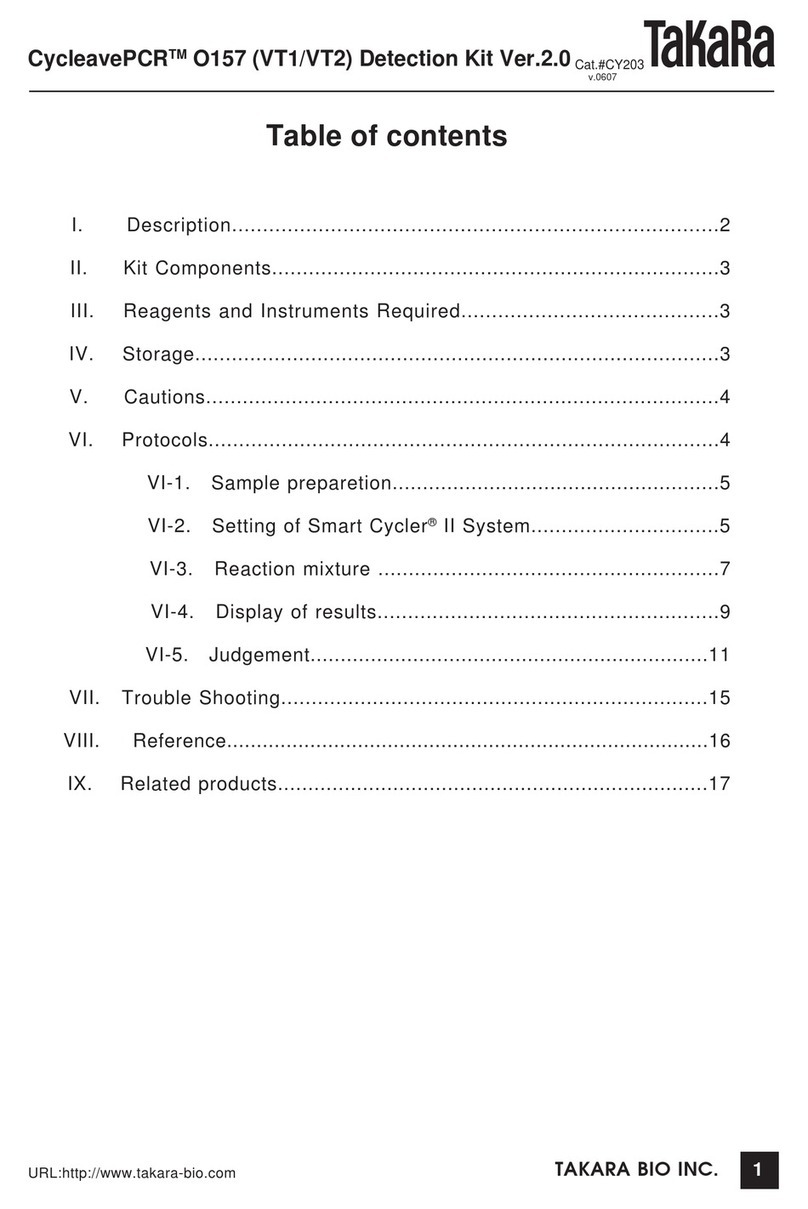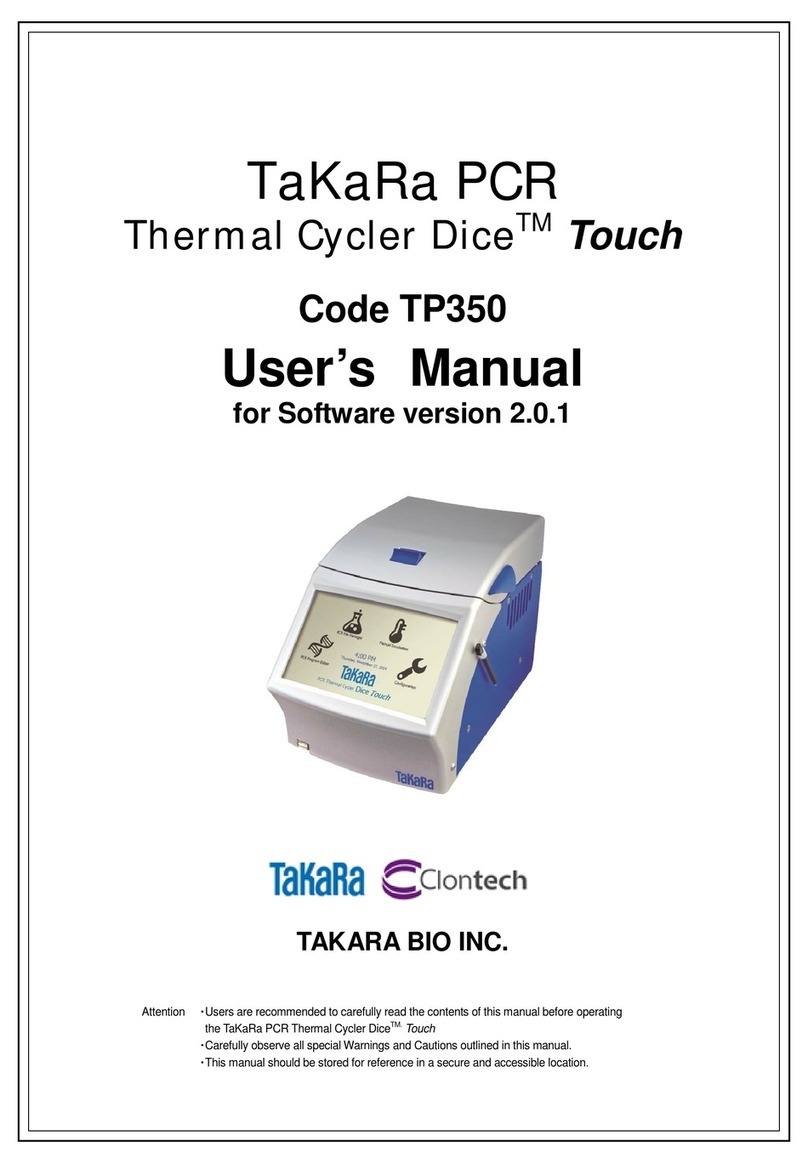
I. Description
TRACP&ALP Assay Kit allows for simultaneous detection of 2 enzymes which are in-
volved in bone metabolism. TRACP which is an osteoclast enzyme marker and ALP an
osteoblast enzyme marker. TRACP&ALP Assay Kit has been designed for simple and
quick detection of ACP (Acid phosphatase) and ALP (Alkaline phosphatase) through
the use of pNPP (
p
-nitro-phenyl phosphate) substrate. The addition of tartaric acid
into the ACP assay, allows for the detection of TRACP (tartrate-resistant acid phos-
phatase) activity. Since this kit utilizes an aqueous substrate, it enables quick activity
quantication by measuring the absorbance of the reactant. In addition to this kit,
TRACP & ALP double-staining Kit (Cat.# MK300) is also available using a non-soluble
substrate. The appropriate kit can be selected depending on assay interest.
II. Introduction
Phosphatase is an enzyme which hydrolyzes aliphatic and aromatic phosphate esters
resulting in the release phosphates. The optimum pHs for alkaline and acid phospha-
tases activity are at alkaline and acid pHs, respectively. Acid phosphatases (ACP) are
present in a variety of cells and tissues, such as prostate, liver, kidney, spleen, erythro-
cyte, platelet and ostelclast.
1,2) In 1959, Burstone3) reported that potent acid phosphatase activity is found in the
osteoclasts and alkaline phosphatase activity is found in the osteoblasts. Following
this report, various research reports have been made on phosphatase activities as-
sociated with osteocytes. In addition to osteoclasts, hairy cells among blood cells are
also known to have TRACP activity. The acid phosphatase activity of osteoclasts was
shown to be of the type that retains phosphatase activity in the presence of tartrate
(tartrate-resistant acid phosphatase:TRACP) . The type of acid phosphatases that is
inactivated in the presence of tartrate is called tartrate-sensitive acid phosphatase
(TSACP) . TRACP activity is now a requisite for osteoclasts.
Alkaline phosphatases (ALP) are membrane-bound glycoproteins and are classied
into four types, i.e. intestinal, placental, placenta-like and tissue non-specic types.
Among the tissue non-specic type alkaline phosphatases, the bone-specic isozyme
is called bone type alkaline phosphatase. This enzyme is bound to the membrane of
osteoblasts and functions to enhance osteogenesis by degrading pyrophosphates.
Pyrophosphates, inhibits crystallization at the calcication site and degrads organic
phosphate esters to increase the inorganic phosphate concentration. Therefore, bone
type alkaline phosphatase is known as a marker of osteogenesis in bone cycle me-
tabolism.
Since bone metabolism is composed of mutually balanced osteogenesis and bone
resorption, simultaneous estimation with two enzyme makers is useful.
III. Kit components (for 500 reactions)
1) pNPP (
p
-nitro-phenyl phosphate) substrate [pNPP substrate] 24 mg x 5 vials
pNPP substrate is supplied sucient to prepare 25 ml of substrate solution which
allows 500 assays in 50 μ l/well in a 96-well plate.
2) Extraction solution 11 ml x 2 vials.
Physiological saline including 1 % NP-40
For solubilization of suspension and adherent cells
3) Sodium tartrate solution 4 ml
0.5 M sodium tartrate buer, pH5.2
TRACP:Used for the detection of osteoclast marker through the addition to the
substrate solution
2
TRACP & ALP Assay Kit Cat. #MK301
v0804
URL:http://www.takara-bio.com





























